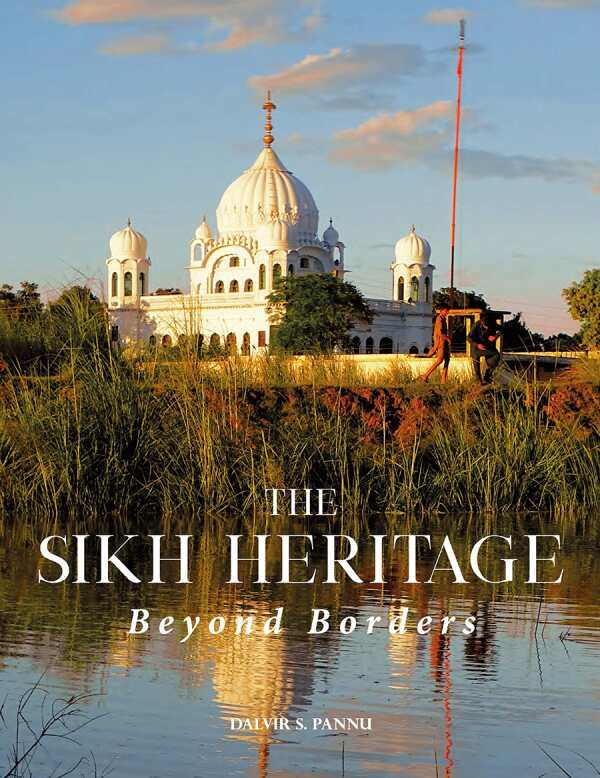
The Sikh Heritage
Beyond Borders
The Sikh Heritage is a masterful presentation of the history of Sikh sites of worship and pilgrimage.
Dalvir S. Pannu’s The Sikh Heritage is a visually stunning encyclopedia analyzing the many gurdwaras, or Sikh houses of worship, in Pakistan.
Starting with the independence of India and Pakistan in 1947, the text presents the historical consequences of the split; the vast migrations of 12.5 million Sikh, Muslim, and Hindu people across the border; and the consequences for religious practice within the Sikh community, including loss of access to many of their holiest sites.
The book reveals that, since Indian and Pakistani independence, most Sikhs live in India. In the six regions of Pakistan where Sikhs remain, over 75% of historical shrines have been lost, and it has been the work of the Shiromani Gurdwara Parbandhak Committee (SGPC) and various other Sikh organizations to restore and maintain these sites. Only as recently as 1999 have Sikhs had permission to move freely in Pakistan to see their holy sites. This book, which links visual representations of these holy sites with historical narrative placing them in the context of the Sikh religion and the subcontinent’s history, is a resource for both Sikhs who cannot make pilgrimage to these sites, or for non-Sikhs interested in learning the history of the historical region of the Punjab.
The encyclopedia is structured in six sections, each devoted to the regions in which the majority of Sikh gurdwaras exist in Pakistan. Each chapter presents the history of the gurdwara and the area around it, explains the stories of the ten gurus, or teachers, of Sikhism, and teaches the religious practices of Sikhism. Key concepts and practices are presented in each of these histories, from the community kitchen (langar) where all in need are served food regardless of religion, to the formation of the Khalsa initiates that take on additional vows within Sikhism.
One chapter gives the history of the Gurdwara Darbar Sahib Kartarpur, the site where Guru Nanak, the founding teacher of Sikhism, settled after his travels and founded his community. It is also the site where Guru Nanak appointed his successor, Guru Angad, making it one of the holiest sites for Sikhs worldwide. Due to the division of India and Pakistan, this site was impossible for many from India to visit for decades.
Another chapter is dedicated to the Shrine of Mai Rajjo and Mai Dharmo, two devout women who received guidance from both Guru Nanak and Guru Hargobind, the sixth guru of Sikhism. This beautiful shrine honors their faith and became a site of celebration for centuries. Sikhism, it is shown, has been an egalitarian religion since its inception, with women and men both being allowed to own property, build holy sites, and read from the Adi Granth, the scripture of Sikhism so venerated that it was elevated to the status of the eleventh guru, taking on the name Guru Granth Sahib.
Through beautiful maps, architectural designs, and photographs of shrines and gurdwara, this book shows the depth of beauty found in these historical sites. It fulfills and extends the mission of the SGPC to preserve Sikh history in Pakistan and brings this knowledge to a worldwide community. The text is accessible, though it may require additional reading to understand the religious concepts presented. A vast appendix includes cited resources, further readings, websites, and scriptures, providing any other necessary information for the audience.
The Sikh Heritage is a masterful presentation of the history of Sikh sites of worship and pilgrimage situated in the challenges of the split between India and Pakistan in 1947.
Reviewed by
Holly Jordan
Disclosure: This article is not an endorsement, but a review. The publisher of this book provided free copies of the book and paid a small fee to have their book reviewed by a professional reviewer. Foreword Reviews and Clarion Reviews make no guarantee that the publisher will receive a positive review. Foreword Magazine, Inc. is disclosing this in accordance with the Federal Trade Commission’s 16 CFR, Part 255.
